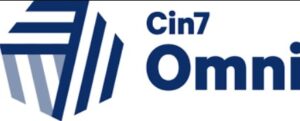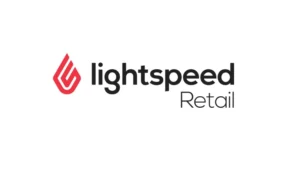When your SMB needs new software, shopping around takes countless hours and a lot of effort. Let’s face it, that’s time and effort you probably don’t have. Yet, cutting corners when selecting software may lead to more lost time in correcting mistakes and reversing course.
On the positive side, researching partners, getting quotes, and finding the right solutions is highly satisfying and opens so many doors for your business.
A well-crafted IT RFP organizes and streamlines the entire software selection process. As a result, you’ll receive tailored quotes from software vendors suited to your goals and budget. Better yet, your RFP gives you clear evaluation criteria to select the right partner.
In this post, you’ll learn the importance of the request for proposal process and how to write a winning IT RFP for your technology roadmap initiatives.
What is an IT RFP?
An IT request for proposal (RFP) is a published document announcing a new technology project. It solicits vendor bids, allowing your business to review different offers to ensure you get the best software provider for your project.
An RFP includes information about your company, project requirements, budget, and other important information so software developers can submit tailored proposals. It’s your job to review each submission, score each proposal, and choose the right provider based on your criteria.
Benefits of Creating an IT RFP
If you’ve never used an IT consulting RFP for an technology project, you might wonder if it’s worth the time and effort. Here are the important benefits you’ll get by creating one for your technology roadmap.
Multiple Bids from Vendors
The main benefit of the RFP process is getting multiple bids from some of the best vendors sent straight to you. You can hand-pick a few vendors based on your research. Or, you can cast a wide net by posting your RFP requirements publicly (on social media, etc.)
Because you’ve built a detailed RFP, you will receive tailored bids and vendors will often opt themselves out if they aren’t a good fit. This saves you precious time. Additionally, 66% of companies report using RFP response software to save time. But, a tool like this is best if you have a lot of proposals or a highly-complex scope.
Valuable Industry Insights
If this is a brand-new tech initiative for your company, the RFP technology project process also provides a learning opportunity. You’ll gain valuable insights into technological innovations, industry trends, and leading methodologies.
The bids you receive may provide a fresh perspective and new ideas that your company hadn’t considered during the planning phase of your technology roadmap.
Customised Pricing Reviews
The proposals you receive will include pricing structures for the services provided, allowing you to quickly and easily compare different providers. This ensures transparency and encourages competitiveness among vendors. You’ll also get bespoke pricing structures you might not get by going direct to providers.
The 8 Elements of a Well-Crafted RFP
If you’re ready to start creating your next RFP, here are the eight essential elements it should include.
1. Executive Summary
This section gives a brief overview of the project, including a description of the project’s purpose and objectives. This helps potential software providers understand your priorities and tailor proposals accordingly.
State what your organization aims to achieve through the RFP process and include your goals, expectations, and budget.
RFP IT Template Example: “We are looking for marketing automation software that integrates with our existing CRM system and provides email marketing and personalized advertising. The software should be scalable to accommodate our growing customer base and within our budget of $10,000.”
Keep your summary short and concise and avoid industry jargon. This is the first impression you give to potential vendors, and you want to attract as many bids as possible. A report showed that organizations only respond to 62% of RFPs, so you need to make yours stand out.
2. Project Overview and Objectives
Your project overview provides those vendors with a detailed project scope and goals so they can understand how best to tailor their proposals. In this section, define the boundaries and objectives of your technology project and the desired results and benefits you aim to achieve.
You’ll also need to include a timetable for vendor selection, implementation, training, etc. The timeline is important because it ensures providers have the resources to dedicate to your project. Without a set schedule, it’s easy for technology initiatives to become delayed.
3. Detailed Technical Requirements
In this section, detail your hardware and software specifications and list your specific requirements. Vendors will need to know what systems you already have in place and what will need to be implemented to give you a streamlined system.
Also, detail the functional specifications and features of the solution you’re looking for. What features do you need the software to have? If you’re unsure, make it clear that you’re open to suggestions from vendors regarding the best tools and features for your company objectives – you may get ideas you haven’t thought about.
4. Evaluation Criteria and Scoring
You’ll need to create a scoring matrix to rank proposals and help you decide which one is best for your organization. We always recommend using weighted evaluation criteria, which assign differing levels of importance to different evaluable aspects.
Include your scoring system in your IT RFP, and describe your scoring methodology clearly. Vendors can use this to tailor their proposals to your priorities and give you more suitable solutions.
5. Timeline and Milestones
Next, create a section outlining your technology roadmap project phases and milestones. What are you aiming to achieve with the new software, and by when? Break down the project into achievable milestones and define your key success metrics.
Along with your project timeline, specify the deadlines for vendor proposal submissions and outline your schedule for reviewing and choosing vendors. Remember to allow time to interview your shortlist of vendors and a grace period for beginning the project.
6. Budget and Pricing Information
In this section, be honest and transparent about your project budget. Without specifying your budget, you’ll likely get proposals outside your price range, which bloats the pool of proposals you need to review.
Provide an overview of your available budget for your project and request detailed pricing information from all vendors. If you’re unsure of your pricing expectations, at least give a cost range to ensure you’re attracting software providers within your budget.
7. Proposal Submission Guidelines
The easiest way to compare and review RFPs is to have a set submission format. Instruct vendors on how to structure their proposals and provide clear guidance on how and where to submit proposals.
The more detailed your guidelines here, the easier it will be to get all the information you need from each proposal. This also gives you an opportunity to assess the flexibility and communication of potential software providers – if they don’t adhere to your submission guidelines, it’s a red flag that they haven’t fully read the RFP’s requirements.
If you’re concerned about boxing in your proposals and want more freedom in potential pitches, clarify this in your proposal submission guidelines so software providers know they can get creative with their submissions.
8. Legal and Contractual Terms
Finally, the legal stuff. Include a section outlining intellectual property rights and define ownership and usage of your intellectual property. Vendors will have access to a lot of company data, so it’s essential to outline legal terms and conditions potential partners must adhere to.
Get sign-off from your legal team on this section to make sure all your bases are covered before publishing your new IT RFP.
Get Quality Submissions For Your RFP at Coachbar
No matter what kind of technology project lies ahead, following an RFP IT process is essential for successful vendor selection. A well-crafted RFP gives you tailored proposals, a streamlined review process, and valuable insights into the industry that could bring a fresh perspective to your technology roadmap.
If the RFP process sounds complicated, let Stackplan’s tech advisors help you find the right software solutions and implementation teams to take your business to the next level.








